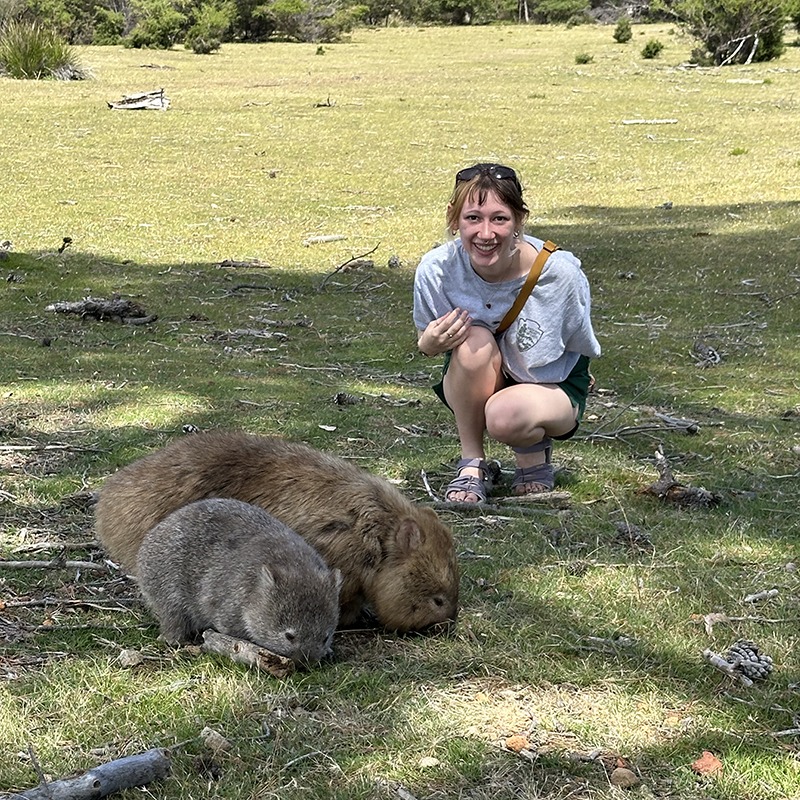Posted: 2/13/2025
Australia study abroad evolving with world issues, student interests
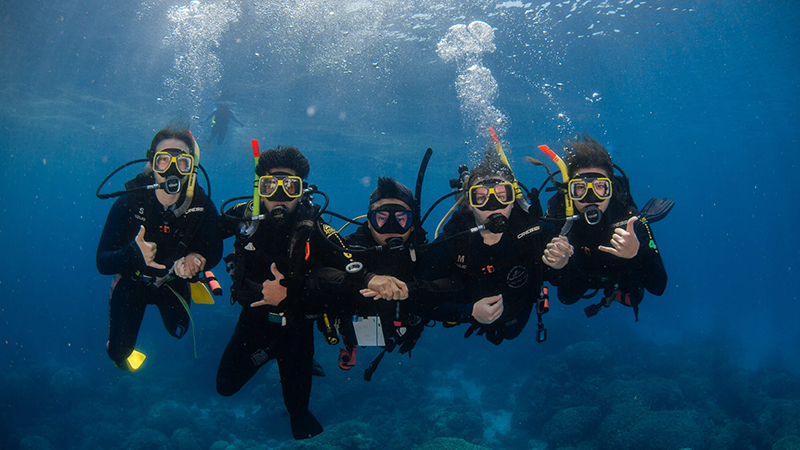
By Ronica Stromberg
On a recent study abroad, Nebraska students had the chance to be serenaded to sleep by kookaburras and awakened by wallabies hopping outside their window. The 20 students toured Australia from December 26-January 14, comparing its animals, ecosystems and ecosystem management methods with those of home.
Mark Burbach, a professor of human dimensions of natural resource management, led this ninth trip to Australia with Becky Schuerman, extension educator. Burbach had led the biennial trip four times before and has continued to refine it under the theme 'managing diverse ecosystems.'
"What's in the best interest of students, and what would they benefit most from, is always at the forefront of my thinking about the next program," he said.
New this time was a look at the latest research at the University of Tasmania on kelp, the brown algae commonly called 'seaweed.' Students learned from the university’s Institute for Marine and Antarctic Studies that giant kelp around the world have been dying off, possibly from climate change. Many fish and crustaceans depend on kelp forests as habitat, so researchers have been trying to develop kelp that can tolerate higher temperatures. Researchers also discussed the possibility of growing kelp, harvesting it, drying it and adding it to livestock feed as a way to reduce methane emissions from cattle.
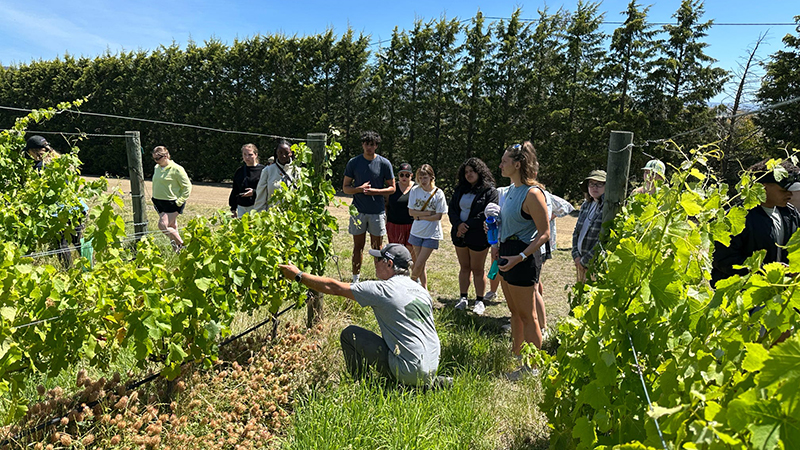
Students also learned more about sustainability at the University of Tasmania, which the Times Higher Education Impact Rankings rated number one in the world on taking climate action. Tasmania is carbon neutral, having cut back on logging, and much of the state's electricity comes from hydro energy.
Caitlin Maiefski, a senior in Nebraska’s fisheries and wildlife program, said almost every Australian that students met on the trip talked about the importance of sustainability and renewable energy.
"I thought it was really interesting how invested even the private business owners or farmers were in sustainability," she said. "It's still not everyone, but it's refreshing to see how much they cared."
The travelers spent 10 days in Tasmania and visited an organic farm that made cheese from sheep milk. Instead of discarding the whey, as is common, the farm family used it to make gin and vodka. Burbach said students in the Engler Agribusiness Entrepreneurship Program could see how these farmers had been entrepreneurial and creative in making a business profitable even without feasible exporting.
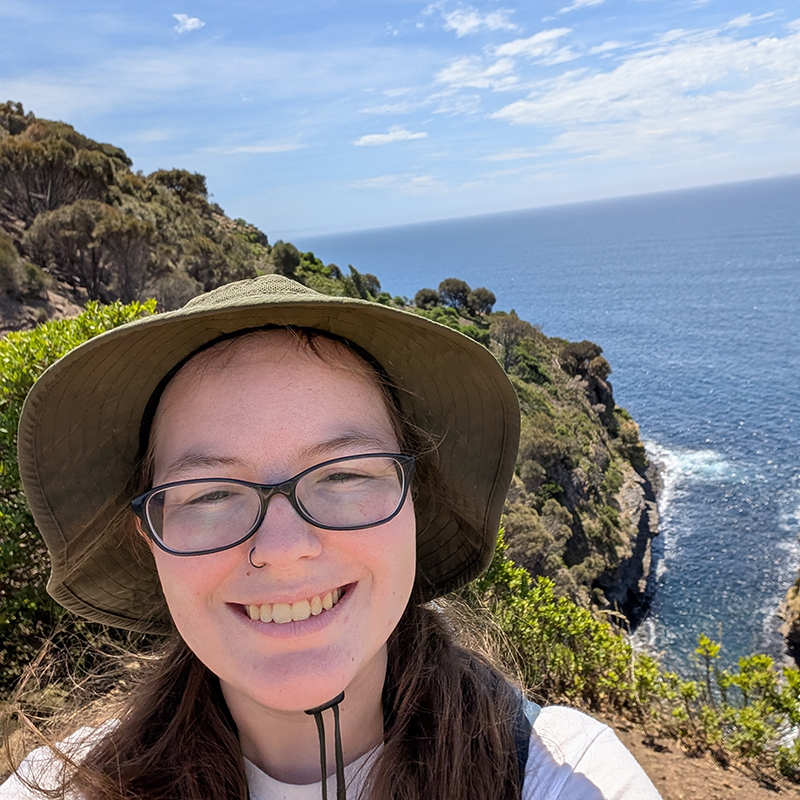
The travelers toured national parks and world heritage areas in Tasmania. They learned of efforts to save the Huon pine, a tree species found nowhere else in the world, and Tasmanian devils threatened by a facial tumor disease.
They visited the Port Arthur Historic Site and the Cascades Female Factory Historic Site, where England shipped its convicts from the 1830s to 1870s. The sites received a boost in population after the Revolutionary War in America, when England could no longer ship convicts to America. Burbach said this history of the founding of Australia still has impacts today, particularly on aboriginals and the estimated 20% of Australians descended from convicts.
"The tour that we get there inevitably leaves some of us in tears," he said. "It's just emotionally powerful to hear the stories of the people and the brutal conditions that they had to endure during that time.”
Trish Hodge from the Nita Education program visited the travelers at the Girl Guides Tasmania camp they lodged at most of the trip. She showed students which plants were edible or medicinal and taught them about aboriginal hunting and cultural practices.
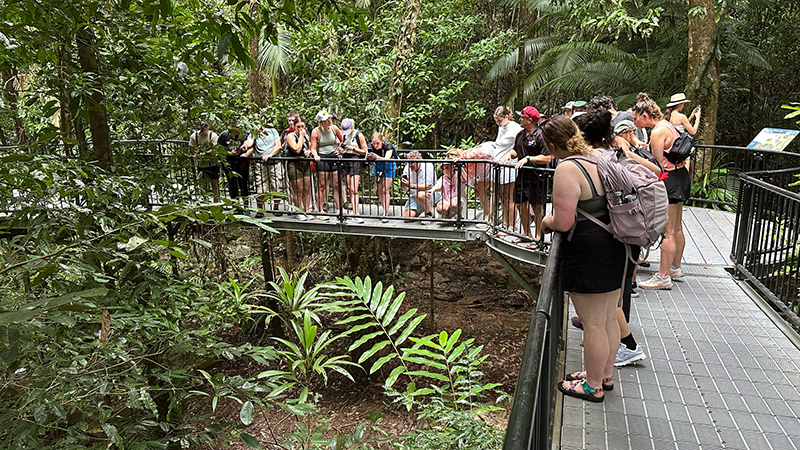
Students learned more about Tasmanian culture and food at the week-long celebration Taste of Summer. They also visited iconic sites in Sydney like the opera house and bridge and visited the world's oldest rainforest, Daintree, in Queensland.
A marine biologist guided them on a tour of the Great Barrier Reef, showing coral destroyed by bleaching, and told how universities, nonprofits and others are seeking a way to stop the bleaching.
"This last year was relatively mild bleaching compared to some very serious bleaching in the past several years," Burbach said. "The extent of the bleaching has been increasing over the last decade or two, so you can't avoid it. Wherever you go, you're going to see elements of it."
Students were required to keep a journal to reflect on what they saw, learned and experienced, but Burbach said he never read or collected those. Instead, each student earned a grade for the study abroad based on participation, a final reflection paper of six pages and a chapter in a storybook about topics researched in Australia. Burbach stated plans to give each student two copies of the storybook to keep as a memory of the trip. Students earned 1 to 3 credits for the study abroad.
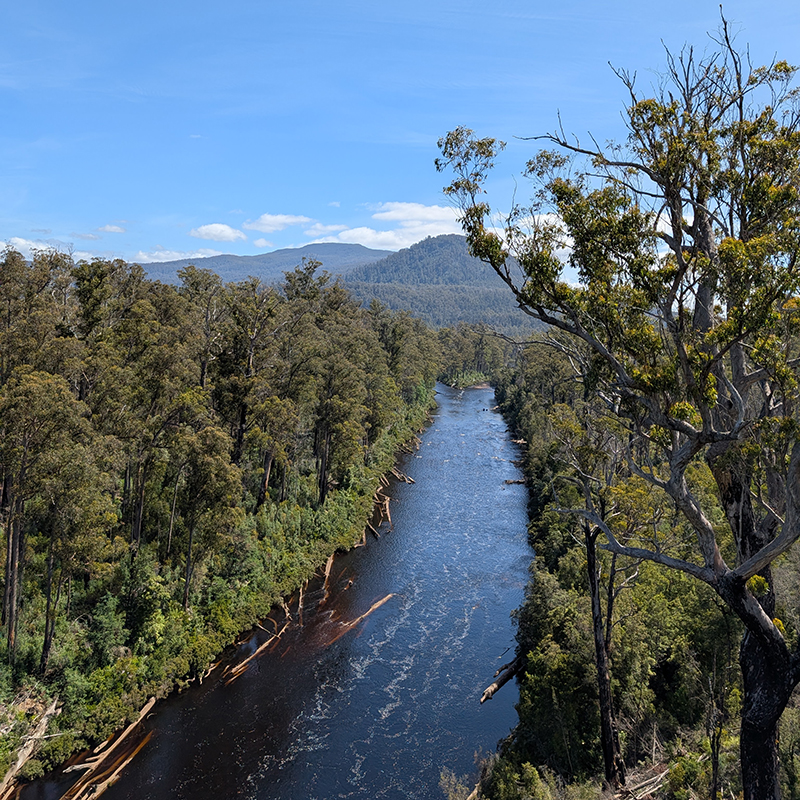
Maiefski said the estimated cost of the trip, $8,000, probably ensured that the students who went were dedicated and invested in the trip's purposes.
"I think there's a different level of dedication to what you're doing if you're willing to spend that much, which makes it really easy to connect with the people and make new friends,” she said. “I didn't know any of the people that were going on it before we went, which was a little scary at first, but we all very quickly became pretty close, and everyone was super nice.”
Burbach said students have told him of lasting friendships formed on the trip and other ways it has had a lasting influence.
"There's something in it for everybody that they go away thinking, ‘This is one of the greatest experiences I've ever had in my life, and I'll never forget it.'"
